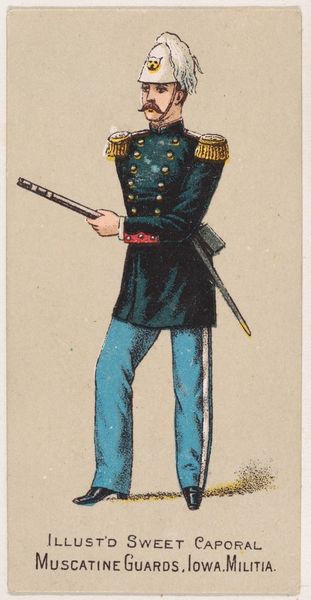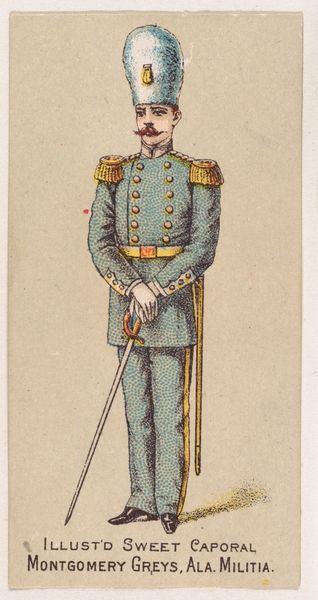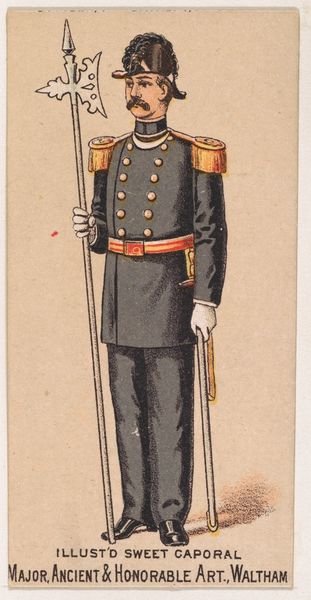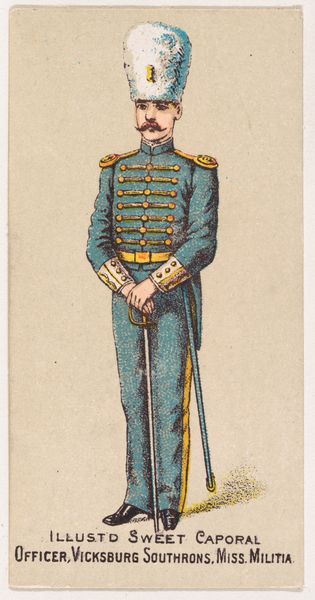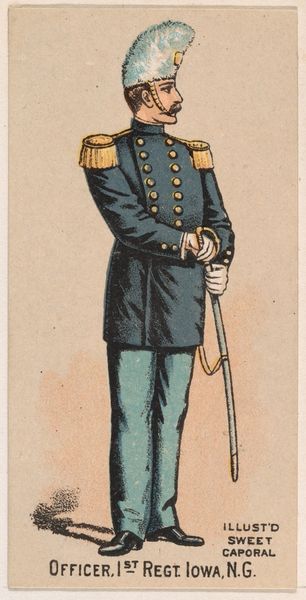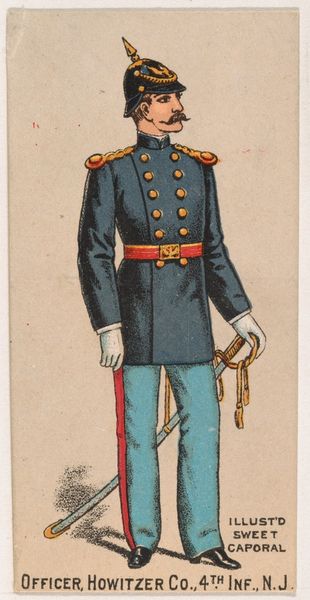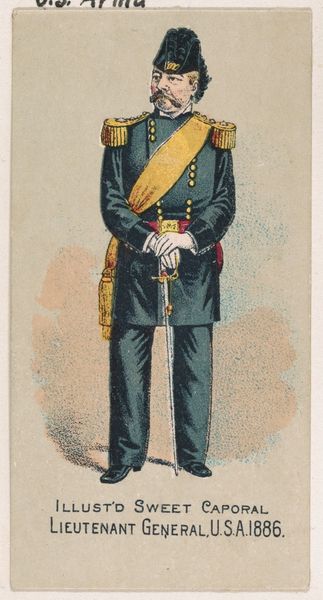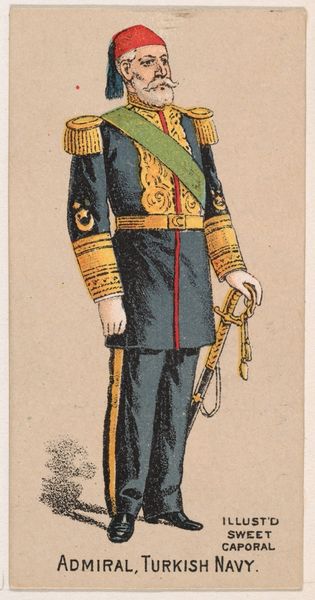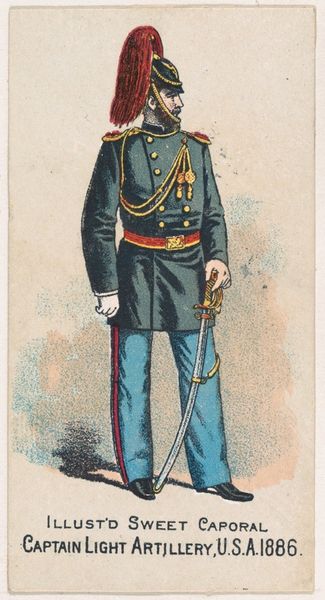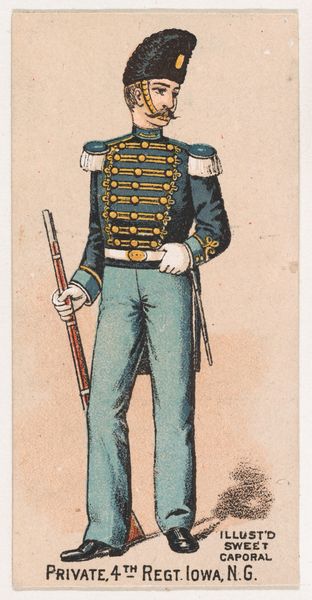
Officer, Busch Zouaves, St. Louis, Missouri Militia, from the Military Series (N224) issued by Kinney Tobacco Company to promote Sweet Caporal Cigarettes 1888
0:00
0:00
drawing, print
#
portrait
#
drawing
# print
#
caricature
#
caricature
#
genre-painting
#
history-painting
Dimensions: Sheet: 2 3/4 × 1 1/2 in. (7 × 3.8 cm)
Copyright: Public Domain
Editor: So, here we have an 1888 print, "Officer, Busch Zouaves, St. Louis, Missouri Militia" made by Kinney Brothers Tobacco Company. It’s clearly meant to be promotional material. What strikes me is how the rather stiff portrait almost veers into caricature, but what’s the broader significance here? Curator: Well, it’s essential to consider this within the context of the late 19th century. Think about the role of commercial imagery at that time. These weren't just depictions of military officers, but advertisements, meant to associate the consumption of 'Sweet Caporal' cigarettes with notions of patriotism and idealized masculinity. The Zouaves themselves have an interesting history, a unit drawing visual inspiration from French North African soldiers; how does that appropriation and representation play out, particularly through commercial channels? Editor: That's fascinating, the cigarettes aligning themselves with that specific kind of militarized exoticism. I hadn't considered the layers of appropriation. Curator: Exactly! Also consider the target audience. Cigarette cards like these were distributed widely, becoming accessible pieces of popular culture. The depiction, arguably veering toward caricature as you noted, made them engaging, collectable. In essence, we see the construction of a heroic, almost romantic image of the military, filtered through the lens of commercial marketing and a visual lexicon of global militarism. Editor: It's like the military is being sold alongside the cigarettes, isn't it? I'm curious, do you think this had an impact on popular perceptions of military service at the time? Curator: Undoubtedly. It contributed to the normalization and idealization of military imagery. Though small and seemingly insignificant, these images were part of a much larger visual culture shaping public attitudes towards war, nationalism, and social roles. They helped create an appetite for the spectacle of military prowess. Editor: So, seeing this as more than a portrait, but really understanding it as a historical document shaped by social and economic forces is important? Curator: Precisely! It reminds us that even seemingly simple images are embedded within intricate webs of power and representation. Editor: I will certainly view the commercial ephemera with fresh eyes now, seeing it as more complex.
Comments
No comments
Be the first to comment and join the conversation on the ultimate creative platform.
